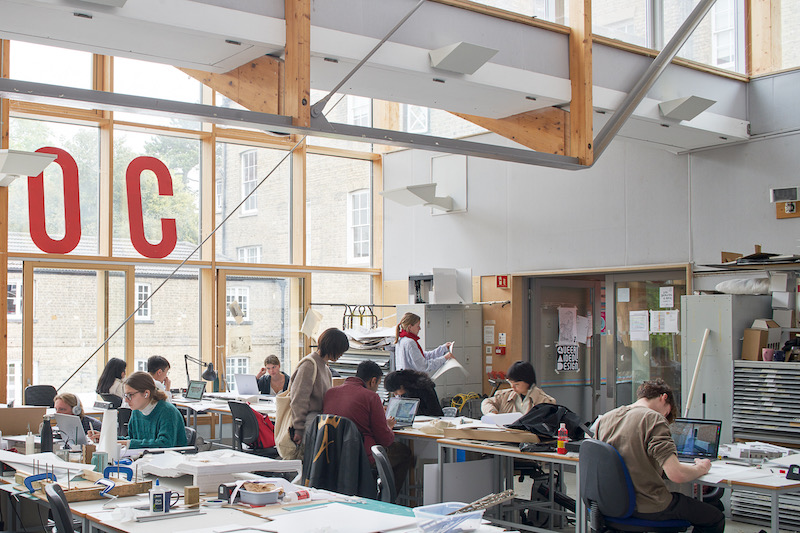The third year is the culmination of the course
There is much more choice in third year. In terms of lecture courses, there is one compulsory course in this year (Professional Practice III) and a choice of history/theory and technical papers, allowing students greater freedom to explore their own interests.
Studio projects in third year are longer and more sophisticated. While work is handed in at the end of each term and marked, the projects might stretch over several terms allowing the urban or rural context to be explored as well as the building itself. Students are expected to produce more sophisticated projects that respond to social and technical agendas and demonstrate an understanding of societal needs.
Success in the third year of the Design degree leads to a Bachelor’s degree. Students who successfully complete the year and gain a sufficient grade may choose to leave with a Bachelor’s Degree or to proceed to the fourth year which forms the Master of Architecture Degree. Students may also choose at the end of the third year to change to other degrees such as Management Studies.
The third year studio brings together all the other parts of the course. The studio projects in this year are generally longer and more sophisticated, involving buildings with more complex briefs on sites that might be rural or urban. The projects deal with current issues in architecture. They will deal with sensitive sites and students are expected to come up with designs that address political and societal as well as technical issues. The projects produced in this year might vary in scale, but students will be expected to produce mature and well-thought out submissions which bring together everything they have learnt in lectures and often engage with the topics of their dissertations. The projects are expected to be technically resolved and demonstrate an understanding of sustainability and the issues surrounding accessibility and participatory design.
The form of the projects varies from year-to-year, with previous third years tackling issues such as rising sea levels, issues surrounding longevity and adaptive re-use, ecological design, social housing and research centres for biomaterials. The topics chosen are designed to be exciting and challenging and students are expected to produce drawings and models. They are marked through termly presentations, although at this level the projects may carry over from one term to the next, being marked in stages. By this stage students are adept at CAD but presentations may combine films and animations and other modes of representation. Model-making is key part of the end result.
The Professional Skills course is divided into two parts as in previous years: a) Management Practice and Law and b) Communication Skills.
The Management Practice and Law part of the course covers land and property law, intellectual property and patents, contract law, professional appointment contracts, professional negligence, limitations of liability, responsibilities under law of professionals and duties of care. It looks in detail at the Equalities Act and the laws around discrimination and accessibility. It explores the building regulations and planning law in more detail. The course is assessed through workshops and coursework submitted at the beginning of the Lent and Easter Terms.
The Communication skills course aims to build on the skills learnt in second year. Students are taught about presenting in seminars and how to prepare a dissertation. Students are taught about BIM and parametric modelling, layering conventions, rendering software, digital photography animation and film.
In third year, students choose two History/Theory options and two Technical Options from lists of papers. A whole range of options are offered.
History and theory options offered in the current year included:
- current topics in urbanism
- books on architecture and engineering
- medieval modern; space and power
- leaving colonialism behind
- landscape and memory
Examples of technical options might be:
- architectural engineering
- introduction to robotics, automation and advanced fabrication techniques
- inclusive design and accessibility
- temporary shelters and disaster relief
- artificial intelligence and design
- circularity and design
Students choose two history theory topics and two technical topics. History/Theory topics are marked through seminar presentations. Technical subjects are marked through workshops and coursework submitted at the beginning of the Lent and Easter Term.

